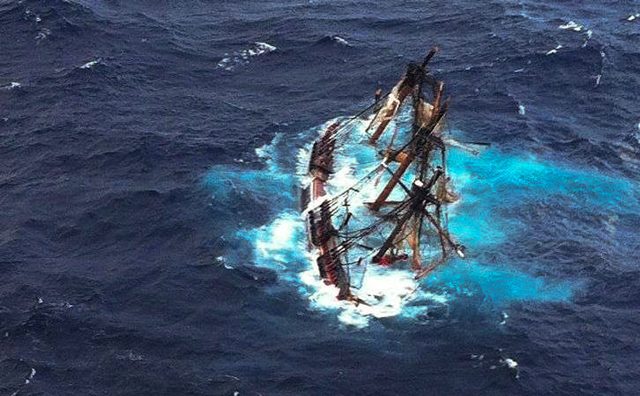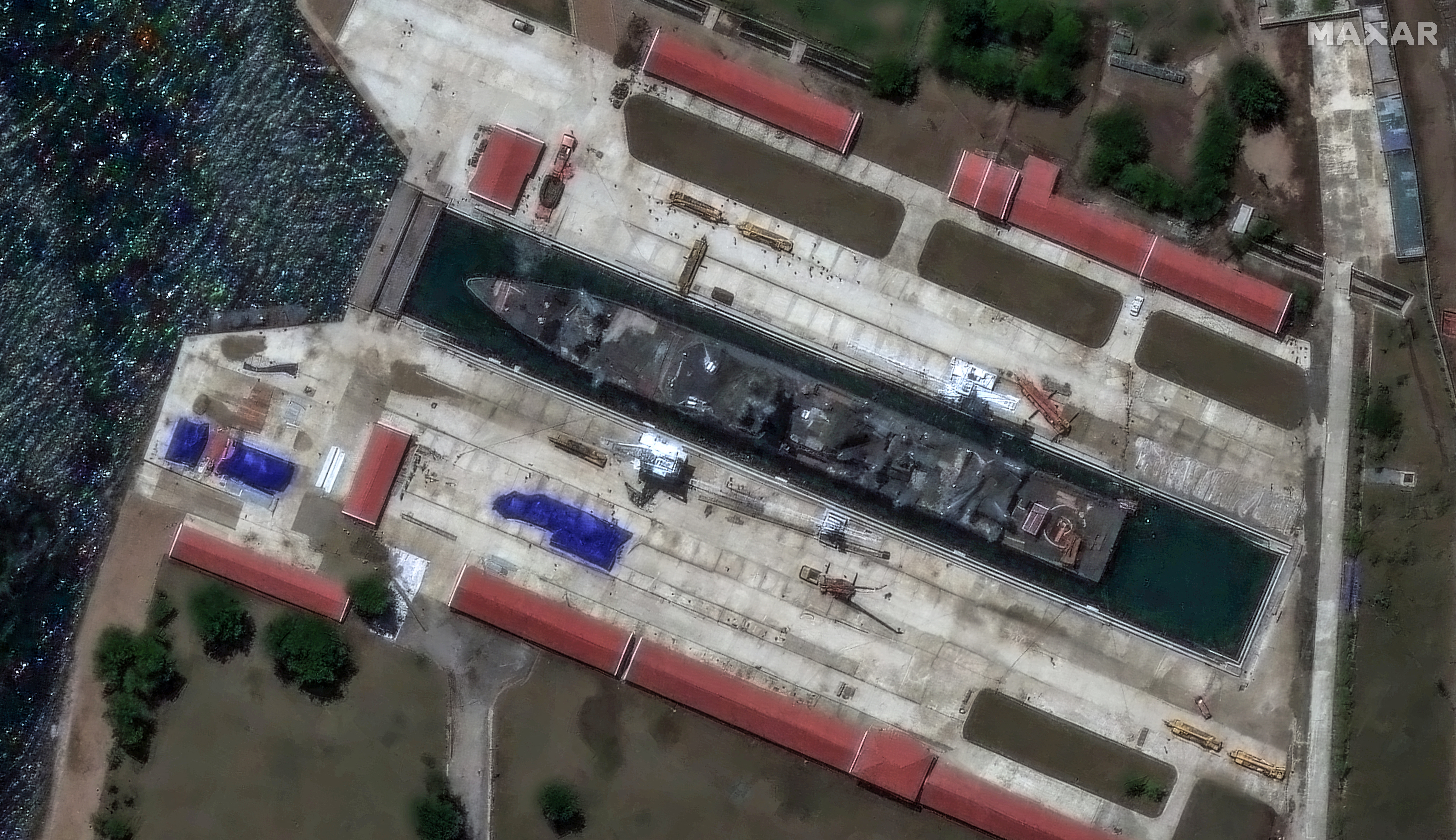Photos of the HMS Bounty replica sinking during Superstorm Sandy Image: USCG
Editor’s Note: This is part 1 of Mario Vittone’s 8-part series from the U.S. Coast Guard’s formal hearing into the October 29, 2012 sinking of the tall ship Bounty off the Coast of Hatteras, North Carolina during Hurricane Sandy, resulting in the loss of two lives, including the Captain and a crew member. The hearing took place with the National Transportation Safety Board in February 2013. The Coast Guard’s and NTSB’s investigation reports can be found here and here, respectively.
By Mario Vittone – With bruising and cuts to his face, broken bones in his hands, chest trauma, a twisted knee, and a dislocated shoulder, John Svendsen swam toward a strobe light. The tall ship Bounty had just sunk underneath him. It was early in the morning of October 29th, last year. He was likely the last person to see the ship’s captain, Robin Walbridge, alive as both men crawled across the foundering ship. Several hours (and probably miles) later, Svendsen – the last Chief Mate of Bounty – was pulled from the Atlantic by a Coast Guard MH-60J – lucky to be alive.
This morning he was sitting alone at a desk at the Renaissance Hotel in Portsmouth, Virginia. Commander Kevin Carroll – the man assigned by the U.S.Coast Guard to investigate the incident – engaged him in hours of Q & A. Today’s testimony, included the details of Svendsen’s injuries, ended at about 4:00 PM Eastern. By the time I drove home from the hearing, local reporters had already misrepresented Svendsen’s testimony.
The first time I weighed in about Bounty’s sinking I said that if “I’ve learned anything in my career, it’s that speculation rarely lines up with facts.” It turns out that facts rarely line up with facts, either. My own local paper – The Virginian Pilot – reported that Svendsen stated that he “twice urged Walbridge to abandon ship before Walbridge agreed,” and later in the same article reported that “Svendsen twice told Walbridge they should abandon ship before Walbridge agreed. The boat rolled before an orderly evacuation could happen, spilling crew members into the ocean.” Other newspapers used the headline “Mate Pleads with Captain to Abandon Ship.” What they all left out was that the time between his first urging and Walbridge’s agreement was two minutes, and he never said that he “pleaded”. Sincerely – there was a time for an “orderly evacuation,” and it was long before Svendsen first urged his captain.
What was made clear by the Chief Mate was that crew members did, indeed, have concerns about leaving New London with Hurricane Sandy on the loose. The Chief Mate brought those concerns to Captain Walbridge before they left port, offering up other options for mooring up-river. The captain held a meeting telling the crew they could stay behind with no hard feelings, but that Bounty was safer at sea than in port, and that he was heading out, according to Svendsen.
Testimony today including a number of things far more concerning than a two-minute dissonance between the mate and the captain. Svendsen testified about alterations to the ship’s construction arrangement in the yard period just prior to sailing that including the moving of fuel tanks and the addition of other tanks, new hatches, new tonnage openings and ladders, and all of it without Coast Guard or class oversight. The ship routinely sailed – according to Svendsen’s comments on Coast Guard evidence – with sails not in Bounty’s approved sail plan and carried removable ballast forbidden by the ship’s stability letter. Caulking on the ship’s plank seams and the replacement of planking raised eyebrows as well. But without access to all the evidence, it was hard to draw conclusions about what Svendsen was commenting on. There was a picture that none in the gallery could see and a reference to DAP and the number 33. Did the crew that caulked the seams of Bounty in the yards prior to sailing use house-grade DAP sealant on the planking seams? I don’t know. It seems more likely that they were bottom coating with Interlux 33 – but these are facts that were alluded to, not verified.
One rumor confirmed by Svendsen was that Bounty routinely needed bilge pumping in normal conditions. “We had to run the pumps once or twice during every four-hour watch.” Bounty made water – lots of it. During his last watch on the morning of October 28th – less than 24 hours before she went down – Svendsen said, ” the bilge pumps were running constantly.” Perhaps he attributed that to the sea state and water coming down from the weather decks, but he hit the rack just after noon thinking the ship was in good shape. Six hours later he was convinced that the ship was taking water through the planking at two spots on the port side (according to his testimony today). Six hours after that, he was alone in the Atlantic and swimming for his life.
After Svendsen’s testimony was finished, Carroll and the panel discussed a piece of evidence (CG-12) – a 2010 survey report from the American Bureau of Shipping – that outlined 19 deficiencies requiring attention if Bounty was to be issued a Load Line certificate. The issues ranged from weather-tight fittings and missing hatch gaskets to improper drainage and problems with watertight bulkheads. The Coast Guard investigator kept repeating the phrase “that repair was not done” when referring to an interview with the ship’s owner following the sinking. The load line certificate was never issued.
There are seven days of testimony left and I intend to be there for all of them. You can be sure that I’ll only tell you what I know for certain based on what I see and hear and I’m not willing to draw conclusions just yet.
It turns out that an investigation is no place for absolutes either – at least not from the press gallery.
Continued Bounty Coverage:

 Join The Club
Join The Club











